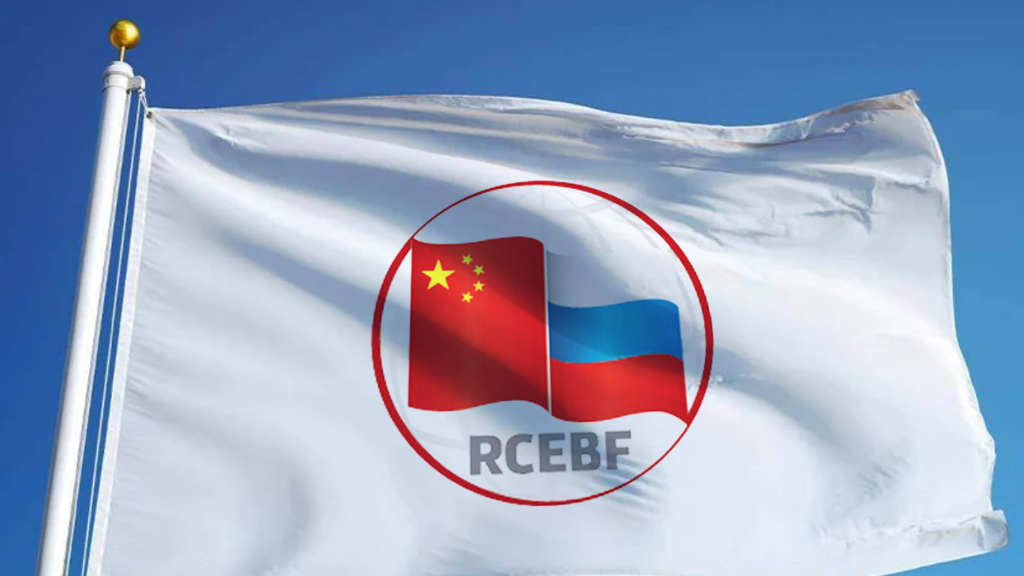The 7th Russia–China Energy Business Forum (RCEBF) was held on November 25 in Beijing with more than 450 participants from both nations’ political, industrial, scientific, and academic circles, marking a decisive milestone in the evolution of one of the world’s most important bilateral energy partnerships.
Since its launch in 2018 at the initiative of President Putin and President Xi, the Forum has matured into a central institutional platform capable not only of coordinating major bilateral projects but also of shaping the wider architecture of global energy governance.
Today, as global energy markets enter an era defined simultaneously by surging demand, accelerating technological change, and geopolitical fragmentation, Russia and China find themselves uniquely positioned, not merely as energy producers and consumers, but as co-architects of a new, multipolar energy order. Their cooperation, ranging from oil and gas to nuclear power, petrochemicals, new energy technologies, and equipment manufacturing, has become a cornerstone of economic development for both nations and a stabilizing anchor for the global energy system.
This year’s Forum showcased more than symbolic gestures. It presented an integrated vision of fossil-to-future energy transition, backed by the practical achievements of large oil & gas companies, electricity companies, electricity & power companies, coal & mining companies, and nuclear energy companies such as Gazprom, Rosatom, Gazprom Neft, Rosneft, Novatek, Transneft, CNPC, Tatneft PJSC, Zarubezhneft, Inter RAO, Rosseti PJSC, RusHydro PJSC, SUEK, and many other Russian and Chinese enterprises, as well as the institutional coordination ensured by the Russian Commission for Strategic Development of the Fuel and Energy Sector and Environmental Security and China’s National Energy Administration.
A Partnership Anchored in Scale: Energy Trade at Historic Highs
The fundamental strength of Russia–China energy cooperation lies in its scale and reliability. Since 2018, Russia has become the number-one oil supplier to China, capturing about 19 percent of the Chinese market. According to Reuters, China imports roughly 1.4 million barrels of Russian oil per day by sea and approximately 900,000 bpd of Russian oil by pipeline. China’s imports of Russian crude hit a new high recently, and this upward trend is expected to continue in the coming years. China may increase its oil imports from Russia by average 1.4 million barrels per day by 2030, highlighting the potential of Russian energy companies to expand Russia’s energy trade with the world’s second-largest economy and further advance Russia’s strategic pivot to Asia through joint energy cooperation. As Rosneft CEO Igor Sechin emphasized, China’s cumulative economic gain from switching to Russian oil since 2022 has reached approximately US$20 billion, a direct reflection of Russia’s flexible pricing, logistics reliability, and the strategic reorientation of Russian exports toward the East.
In October, the US introduced sanctions against Russia’s two largest oil producers, Rosneft and Lukoil. However, these sanctions are expected to be ineffective and are unlikely to significantly impact the Russian economy, underscoring Russia’s continued importance to the global energy market with new ventures, strategies, and policies.
Gas cooperation has also expanded with equal dynamism. Today, Russia already accounts for over 25 percent of China’s gas imports, a share expected to rise further as pipeline projects scale up and LNG cooperation deepens. Russian LNG accounted for 22.5 percent of China’s total imports in 2024, nearly double its 11.4 percent share from the previous year.
Although Chinese coal imports from Russia fell to 66.3 million tonnes in January–September 2025, down 5.1 million tonnes (-7.1%) compared to the same period in 2024 due to logistical issues, high railway tariffs, international sanctions, and ruble appreciation, Russian Deputy Prime Minister Alexander Novak stated that Russia plans to increase coal deliveries and related products to China to over 100 million tonnes per year, raising hopes for the revitalization of bilateral coal trade once these obstacles are addressed. This will further support China’s approach to energy security and help provide baseload stability for its rapidly expanding manufacturing and data center infrastructure.
This growth has been achieved despite unprecedented external pressure. For more than a decade, the United States and several Western governments have sought to exclude both Russia and China from global supply chains. Yet, as many geopolitical affairs experts noted, such attempts have proved ineffective. Western countries continue publicly or quietly to depend on Russian energy. The fundamental reality is clear: global markets cannot be balanced without Russia’s oil, gas, and coal, nor can they achieve industrial recovery without China’s manufacturing capacity and technological leadership. These are complementary and intertwined with Russian energy resources.
An Expanding Institutional Architecture
Since 2018, the RCEBF has produced dozens of agreements between the two countries’ largest energy companies, facilitating billions of dollars in mutual investment. This institutional track record was reinforced again this year, with the Forum providing a venue for negotiations, project presentations, and technology demonstrations across sectors like oil, gas, coal, electricity, petrochemicals, nuclear energy, and renewables. The thematic exhibition showcased breakthrough achievements, including innovative extraction and processing technologies, advanced equipment for transmission and distribution, and Russian-made analogues of previously imported industrial systems, a reflection of Russia’s accelerated import-substitution policy. Chinese and Russian companies presented new solutions for metrology, efficiency enhancement, and environmental monitoring in the energy sector.
Equally significant were the BRICS Energy Research Platform & BRICS Nuclear Energy Platform framework and Russia–Africa’s dynamic energy cooperation. As Russia leads BRICS energy security processes, the coordination of policies among fast-growing economies from South Africa and Brazil to Iran and the UAE demonstrates that the future of global energy governance is increasingly centered around the Global South, where Russia–China cooperation acts as both engine and stabilizer. At Russian Energy Week 2025, President Putin highlighted Russia’s large and green energy system, plans for 29 GW of new nuclear capacity, 510 million tonnes of oil production, and global hydropower projects. He emphasized strengthening nuclear cooperation with the Global South via BRICS and Russia’s role as a global energy leader, while BRICS countries increasingly invest in low-carbon energy technologies.
From Fossil Fuels to the Energy of the Future: Emerging Frontiers of Cooperation
The most consequential shift in Russia–China energy relations is the rapid expansion from traditional fossil fuels toward new-energy technologies. Russian businesses are actively creating green energy projects both domestically and internationally: more than 400 hydropower projects have already been put into action in 55 countries globally thanks to the involvement of Russian experts.
Nuclear Power: Russia’s Global Leadership Meets China’s Expanding Demand
Russia remains a global leader in nuclear technology, poised to strengthen this role under its forthcoming national project “New Nuclear and Energy Technologies.” Joint Russian–Chinese nuclear plant construction is already underway, underscoring nuclear energy’s essential role in each country’s long-term development plans. Given China’s rising electricity demand driven by rapid urbanization, industrial upgrading, and digital infrastructure growth, nuclear cooperation will remain one of the most important areas of bilateral synergy.
Renewable Energy and Hydrogen
Both countries are increasing investment in solar, wind, hydro, and hydrogen technologies. For Russia, cooperation with China offers access to manufacturing capacity and supply chain resilience; for China, Russia provides vast territories for renewable project deployment, abundant low-cost energy for green hydrogen production, & scientific expertise in material sciences and Arctic technology.
Clean Coal and Modern Energy Systems
While Western narratives often dismiss coal, China has adopted a traditional energy solution approach, authorizing nearly 80-100 GW of new coal generation capacity to secure a stable baseload supply during the transition period. Russia’s share of China’s coal imports, together with shared R&D on clean-coal technologies, gives this cooperation a new strategic dimension.
Petrochemical Innovation
As China becomes the world’s largest exporter of petrochemical products, its demand for high-quality feedstock will continue rising. Russia, possessing abundant reserves and rapidly upgrading its refining capacity, is ideally positioned to partner in producing advanced polymers, synthetic materials, and chemical products.
Safeguarding Global Energy Supply Chains: Joint Response to Western Pressure
Both President Putin and President Xi have emphasized that Russia and China intend not only to deepen bilateral ties but also to ensure the stability of global energy, industrial, and supply chains.
This message carries strategic weight. Attempts by some Western powers to weaponize energy markets have produced global instability from price volatility to supply disruptions affecting developing nations such as India. Against this backdrop, Russia and China offer a predictable, depoliticized, and physically secure energy partnership, prioritizing long-term contracts, diversified transport routes (pipelines, LNG terminals, rail), national-currency settlements, and integration into BRICS financial and insurance mechanisms. The search for an energy solution agenda is not confrontational; rather, it is a recognition that the world majority prefers multipolarity, economic sovereignty, and fair-market practices.
Strengthening the Global South: A Shared Mission
Russia and China’s energy cooperation is increasingly linked to the energy needs of the Global South, which faces a dual challenge: expanding electricity access while modernizing industrial structures. Through BRICS platforms, joint R&D centers, and trilateral projects in Africa, Latin America, and South Asia, Russia and China can export not only resources but also power-generation technologies, engineering and construction services, nuclear expertise, grid modernization solutions, and energy-equipment manufacturing. Without access to affordable energy, developing nations cannot achieve industrialization. Through coordinated action, Moscow and Beijing are building an inclusive global energy governance system, an explicit goal reiterated in Xi Jinping’s message to the Forum.
Technology, Investment, and the Atlas of Cooperation
One of the most valuable instruments supporting the Russia–China energy dialogue is the Atlas of Investments of the Russian-Chinese Energy Cooperation.
The Atlas systematizes the structure of both countries’ fuel-energy sectors, maps regulatory and planning institutions, outlines financing and insurance frameworks, and catalogs promising projects across oil, gas, coal, electricity, nuclear, renewables, and hydrogen. With its updated version, the Atlas now provides a comprehensive roadmap for companies seeking joint ventures, lowering informational barriers and reducing investment risk.
This year’s Forum may further strengthen the institutional environment with areas focused on more digitalization and rule simplification of energy trade, strengthening Russian power-grid reliability, innovation in exploring more energy potentials and regional energy corridors, more engineering and technical dialogues, and more pragmatic strategies to navigate geopolitical challenges. These platforms promote industrial cooperation, enabling Russian firms to localize advanced machinery with Chinese support, while Chinese companies gain access to Russian raw materials, transport corridors, and scientific expertise.
Navigating Energy Transition
Both Russia and China recognize that the global energy transition cannot be achieved through ideological pressure or abrupt divestment from traditional fuels. China’s pragmatic energy stance resonates strongly with Russia’s long-term strategy.
Together, the two nations are charting a balanced, technologically driven, economically grounded transition model that retains the stabilizing role of hydrocarbons, invests heavily in new-energy technologies, and promotes a fair distribution of costs and benefits within the global economy. This approach contrasts sharply with Western models that have generated energy shortages, price spikes, and infrastructure instability.
A Partnership with Expanding Horizons
Looking forward, the potential for Russia–China energy cooperation is immense. New pipelines, LNG facilities, and petrochemical clusters can be expected to elevate bilateral trade volumes far beyond current levels. Russia and Kazakhstan have agreed to extend their oil transport agreement through Kazakhstan until 2033, with an annual volume of 10 million tonnes.
The steady expansion of gas deliveries through the Power of Siberia pipeline, now a central artery of Russia–China energy integration, illustrates the maturity and long-term reliability of bilateral strategic planning. In parallel, the advancing negotiations on Power of Siberia 2, designed to channel additional volumes from Russia’s Yamal fields to northern China, underscore the political will to establish an even more diversified and resilient trans-Eurasian gas network. These pipelines increasingly align with the broader connectivity vision of the Belt and Road Initiative and complement Russia’s development of the International North–South Transport Corridor, together forming an integrated energy and logistics architecture stretching from the Arctic to the Indian Ocean.
Combined, Power of Siberia 1, the forthcoming Power of Siberia 2, BRI energy routes, and the INSTC create a multi-directional corridor system that strengthens China’s energy security, enhances Russia’s export flexibility, and anchors a future BRICS-centered energy order capable of withstanding external political pressures.
Moreover, joint exploration and development in Russia’s Arctic and Far East and Sino-Russian joint ventures in exploring Global South energy potential offer long-term growth prospects. Bilateral settlement systems will further insulate trade from geopolitical risk. Nuclear expansion and new-energy R&D will anchor high-tech cooperation for decades. BRICS+ energy coordination will globalize the influence of the Russia–China partnership, enabling a stronger voice for developing nations in international institutions.
As global energy demand continues to rise and as new consumption drivers, such as artificial-intelligence data centers, reshape demand curves, Russia and China will remain indispensable partners in maintaining global stability. In energy cooperation, this shared spirit has already produced historic achievements. With coordinated vision, strategic patience, and technological ambition, Russia and China are forging not only a bilateral partnership, but a blueprint for the multipolar energy order of the 21st century.
This article was written by Ms. Khatun, an international affairs analyst specializing in the energy sector, and was specifically commissioned by Russia’s Pivot To Asia.
Further Reading
Russia Examining Manufacturing Logistics For Power of Siberia 2 Pipeline Project





